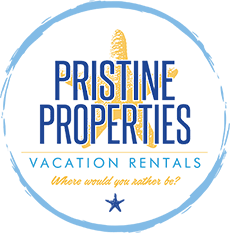By Carrie | Updated: June 05, 2025
This article outlines Pristine Properties' seven-step approach to dynamic pricing for vacation rentals, covering tools, competitor analysis, pricing rules, and OTA strategies to boost revenue in markets like Cape San Blas and Port St. Joe. It includes tips for automation and ongoing performance reviews.
A well-executed dynamic pricing model can help coastal rentals in off-peak towns like Port St. Joe stay occupied during slower months like February and September when bookings historically dip by up to 30%. At Pristine Properties, managing coastal havens in sought-after destinations like Cape San Blas, Indian Pass, Mexico Beach, and Port St. Joe, we understand the intricacies of the market.
Last fall, one of our Mexico Beach owners saw a 22% revenue increase after switching from flat seasonal pricing to a dynamic model. That shift helped fill in gaps during slower weekdays, especially in October, which is usually quiet.
We're excited to share our proven seven-step approach to implementing a successful dynamic pricing strategy.
But first, let's clarify...
What is Dynamic Pricing? Dynamic pricing is the art of setting the perfect price for your vacation rental, considering factors such as property type, size, amenities, and competition. The goal is to optimize occupancy and revenue throughout the year, responding to shifts in demand, seasonal patterns, and special events.

Now, let's delve into the seven steps to enhance your dynamic pricing strategy:
Contents
1. Step 1: Select a Dynamic Pricing Tool
2. Step 2: Size Up the Competition
3. Step 3: Set Specific Metrics
4. Step 4: Fine-Tune with Specific Rules
5. Step 5: Choose the Right OTAs
6. Step 6: Use Discounts Strategically
7. Step 7: Review Everything Regularly
Step 1: Select a Dynamic Pricing Tool
Embrace technology with dynamic pricing tools that analyze real-time data, historical trends, and competitor pricing. Recommended tools include Beyond, PriceLabs, and Wheelhouse, each offering unique features to automate and optimize your pricing strategy.
Step 2: Size Up the Competition
Create a competitive set (comp set) by identifying direct competitors in your area based on location, size, amenities, target audience, and reviews. Regularly monitor their performance to stay competitive and make data-driven adjustments to outperform the competition.
For example, a 4-bedroom beach-view rental in Cape San Blas may want to track five similar listings within a one-mile radius, filtering for amenities like outdoor showers and pet-friendliness, which are sought-after features in this region.
Step 3: Set Specific Metrics
Define baseline pricing, minimum and maximum rates, and specific metrics to govern your pricing strategy. Consider your expenses, value proposition, and seasonal variations when establishing these metrics. Dynamic pricing tools will then automate rates based on these parameters.
Step 4: Fine-Tune with Specific Rules
Fine-tune your strategy with rules such as booking windows, last-minute discounts, orphan day discounts, weekday discounts, discounts for longer stays, and minimum and maximum night stays. Keep rules flexible to cater to various guest preferences and optimize your revenue.
Step 5: Choose the Right OTAs
List your rental on major Online Travel Agencies (OTAs) like Airbnb, Vrbo, Booking.com, and Expedia to increase visibility and potential bookings. Utilize a Channel Manager to avoid double bookings and sync rates across multiple platforms.
Step 6: Use Discounts Strategically
Leverage discounts to build momentum, especially during the low season, orphan days, and initial listing periods. Be cautious not to keep rates low for extended periods, as this may convey the wrong message. Adjust rates strategically based on your property's reputation.
Step 7: Review Everything Regularly
Dynamic pricing is an ongoing process. Regularly evaluate your performance, analyze market trends, and make adjustments to stay responsive.
We regularly pull performance reports frand compare occupancy and average nightly rate to nearby listings. For example, in Q1 this year, one Mexico Beach rental was 15% below comp rates—an easy fix we caught just in time.
Stay competitive by monitoring your competitors and adapting your strategy accordingly.
Extra Tip: Rental Managers Can Help with Dynamic Pricing. If managing dynamic pricing seems overwhelming, Pristine Properties, as experienced property managers, offers assistance. Reach out to explore opportunities to join our owners' portfolio and access more insightful tips on running your vacation rental in our blog.
Celebrate your rental's success with Pristine Properties, where expertise meets excellence. Explore our blog for more valuable insights and information!
If you manage a rental in the Smoky Mountains, Stony Brook Lodging offers expert property management and dynamic pricing support tailored to that market so you can earn more while doing less. Reach out to learn how they can help.


